System solutions for technological problems. Рубрика в журнале - Nanotechnologies in Construction: A Scientific Internet-Journal
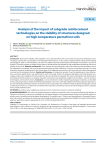
Статья научная
Introduction. Ensuring the stability of the subgrade in areas with permafrost soils is one of the most pressing challenges in modern design, construction, and operation of transportation infrastructure. In the context of global climate change and increasing anthropogenic loads on soil foundations, the search for effective ground reinforcement technologies has become a key area of research. This article presents an analysis of the impact of reinforcement technologies for high-temperature permafrost soils on the stability of structures. Methods and Materials. Two structural and technological solutions for reinforcing the foundation soils of the subgrade are considered: the use of jet grouting technology and the installation of vertical crushed stone columns. The study is based on numerical modeling of the stress-strain state of the subgrade on permafrost soils, both with and without the proposed structural and technological solutions. Results and Discussion. A comparative analysis of vertical displacements, shear deformations, and slope stability factors was performed for each technology. Overall, the proposed foundation soil reinforcement technologies improve the reliability of structures built on them, particularly the subgrade. The choice of foundation soil reinforcement technology should be based on an analysis of specific construction and operational conditions of the object – natural, technical, technological, and economic factors. Conclusion. It can be noted that in similar engineering-geological conditions, as described in this study, jet grouting is suitable for reinforcing foundation soils in areas with high stability and bearing capacity requirements, but with mandatory preliminary selection of the cement slurry and analysis of its exothermic behavior during strength gain. Vertical crushed stone columns, as a method of soil reinforcement, represent a promising structural and technological solution, especially for less heavily loaded sections.
Бесплатно
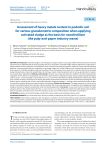
Статья научная
Introduction. Activated sludge is one of thepulp-and-paper industry waste types. Within the framework of the rational natural resources’ utilizationand the waste recycling, due to its composition, activated sludge could be subjected to certain technological solutions for the production of nanofertilizers, since it has been previously the basis for making of various soils and biological products. However,occasionally the composition of activated sludge may contain different toxic compounds, heavy metals, and their impact on soil fertility and plants vital state is profound. Thus, the purpose of our research is to study the effect of the activated sludge introductionas a basis for nanofertilizers on the heavy metals contentin podzolic soils of various granulometric composition in agricultural exploitation. Methods and materials. Research was conducted under the conditions of dummy experimentin vegetation vessels. We have used podzolic soils of various granulometric composition (clayey, loamy, sandy) and pulp-and-paper industry waste – activated sludge in concentrations of 1; 2.5; 5 and 10% of the dried soil weight. Determination of the heavy metals gross content has been carried out by the atomic absorption method with measurement on the AA-7000 spectrophotometer (Shimadzu, Japan); mobile fraction of heavy metalsdetermination (подвижныеформы) – utilizing acetate-ammonium buffer solution by inductively coupled plasma mass spectrometry methodology. Results and discussion. The paper presents the results of the research on mobileand gross forms of heavy metals in podzolic soil of various granulometric composition when applying activated sludge as the basis of organic nanofertilizer under the dummyexperiment. Conclusion. It was shown that the content of mobile and gross forms of the studied metals (Fe, Mn, Cu, Zn, Ti, Al, Ni, Co, Cr, Cd and Mo) were within the health-based exposure limits, with the exception of Cd gross form, where the maximum excess was 2.5 MAC (maximum allowable concentration).
Бесплатно
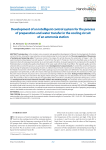
Статья научная
Introduction. In the modern socio-economic and geopolitical development of Russia, the development of industry comes to the fore. Among the many industries, ammonia stations play the most important role. The main regularities of the process of pumping and preparing water. The process consists of six stages, this article discusses the automation of stages 1 and 2: for water treatment and pumping it out with pumps H1 and H2 from the tank P2. Products in the form of purified water are the most important criteria for subsequent production at an ammonia plant, therefore, increased requirements are imposed on the quality of finished products, including the quality of purification of the water used with the help of nanofilters. The required quality cannot be achieved without control the process in an automated mode. Development of a neural network. To control the converters frequency values during the preparation and pumping of water, an artificial neural network must be used. Its development was carried out in the Matlab environment in the Neural Network Toolbox package, input and output data were defined for this, data processing and preparation were performed, as well as the choice of the type and architecture of the neural network. The architecture of the Layer Recurrent neural network, the process of its construction and training in Matlab is described. Testing of neural networks. During testing of the Layer Recurrent network for the degree of their training, the smallest error was obtained for 30 neurons in the hidden layer. The proximity to the set values indicates the applicability of the network for controlling the parameters of frequency converters. Development of the neural network controller model in the Simulink package. The simulation of the control system in the Simulink package using a neural network controller with the Layer Recurrent architecture is performed. Checking the frequencies of the frequency converters H1 and H2 in Simulink for the level parameters in the tanks and in the tank LT1_вх, LT2_вх, LT3_вх showed that the object model works correctly, thus, the simulation of the neural network showed that the training was successful. Conclusion. As a result of the conducted research, an artificial neural network was developed to control the process of preparing and pumping water in the Matlab environment and a simulation of a neural network in the Simulink package.
Бесплатно
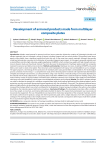
Development of armored products made from multilayer composite plates
Статья научная
Introduction. Modern requirements for personal and local armor protection dictate the creation of lightweight, durable, and efficient materials that can withstand a variety of threats, including shrapnel and low-velocity bullets. Conventional metal armor panels, while reliable, have a significant weight that limits their use. At the same time, ceramic materials, although they provide a high level of protection, are prone to the formation of secondary fragments upon impact. In this regard, composite materials such as aramid fibers and ultra-high-molecular-weight polyethylene (UHMWPE), which combine low weight with high strength and resistance to dynamic loads, are of particular interest. The article discusses the development of multilayer plates made from composite materials for personal and light armor protection. Methods and materials. Multilayer structures, including UHMWPE and aramid fabrics, were used to create armor plates. These structures were impregnated with epoxy resin and bioadditives such as collagen. The paper proposes a technology for the production of multilayer plates using aramid fabric and bioadditives. The technological process consisted of several steps: 1) a comprehensive study of the selected polymer materials with experimental determination of rigidity and strength characteristics; 2) cutting the fabric using a laser machine; 3) manufacturing an armor plate depending on the material and the loads subjected to it. Composite plates made from UHMWPE were created through hot molding using a press mold, and they consist of varying numbers of material layers. Multilayer elements (up to 30 layers) were made from aramid fabric with epoxy resin with bioadditives, which impart new elastoplastic properties to the material. Results. The ANSYS software package was used to calculate the strength of a multilayer composite plate under shock loading; field testing of the obtained plates as armor protection were also conducted, demonstrating good agreement with the calculations. Discussion. The obtained combined armor plates are highly effective in absorbing kinetic energy and preventing fragment penetration. Adding bioadditives to the epoxy matrix increased the interlayer defect zone, which contributed to the dissipation of impact energy. According to the authors, when adding bioadditives, the material acquires high fracture toughness. Conclusion (Findings). The developed armor plates offer a combination of low weight, no ricochets, and minimal deformation behind the barrier. This makes them promising for use in personal and local protective equipment. The use of bioadditives has improved the mechanical properties of the composite materials, and the test results confirm that the products comply with the Br3 protection grade, with a weight reduction of 25–30% compared to the analogues. The resulting products (low weight, absence of ricochet and traumatic consequences after impact) make them suitable for use as protection against shrapnel and pistol bullets.
Бесплатно
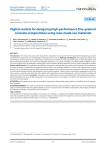
Статья научная
Introduction. This research focuses on the study of the composition and properties of fine-grained self-compacting concrete, including the development of a methodology for designing their structure. Methods and Materials. The following materials were used: Portland cement CEM I 42.5B; crushed stone screening of 2.5–5 mm fraction from the Kurlek quarry in the Tomsk region; sand from the Tuganskoye deposit was used as fine aggregate; quartz flour was used as microfiller; a complex modifying additive consisting of microcalcite from the Dalnegorsk mining quarry and nanosilicon dioxide obtained by the arc plasma evaporation method. Results and Discussion. The proposed methodology incorporates a computational and experimental approach that enables the selection of optimal combinations of aggregate fractions, fillers, and developed additives to achieve the required grain packing density. The use of statistical methods, such as polynomial approximation and Gaussian process regression, allowed us to identify the relationship between particle size distribution and concrete properties. Optimal ratios of each quartz aggregate fraction from man-made raw materials were determined for specific self-compacting concrete requirements in terms of concrete mix flow and hardened concrete strength. Conclusion. Laboratory tests confirmed the accuracy and effectiveness of the proposed calculations. Self-compacting concrete grade B40 compositions with reduced cement consumption (412 kg/m3) and high-performance` characteristics were developed.
Бесплатно
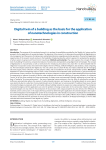
Digital twin of a building as the basis for the application of nanotechnologies in construction
Статья научная
Introduction. The purpose of the conducted research is to analyze the possibilities provided by the “digital city” system and the prospects for the application of nanotechnologies. The objective of the research is to determine the possibility of digitalization in city management and the process of making more substantiated decisions regarding real estate operation. The practical application opportunities of the research results are due to the feasibility of implementing the author's approach to analyzing the operation of urban systems in general and “smart home” in particular. Methods and materials. The article explores the concept of “digital twin of a building,” its functions, components, features of construction and operation using digital twin technologies. The concept of digitalization is characterized, as well as mechanisms for introducing innovations into urban life. It is demonstrated that the “digital city” incorporates various innovative technologies: Internet of Things, artificial intelligence, data analytics, cloud computing, etc. The technologies utilized by the “digital city" not only collect data on urban life but also employ obtained data for managing electricity supply, waste collection, ensuring people's safety, and as elucidated in the article, transportation systems. Discussion. Digitization in urban management helps to create a more convenient and sustainable urban environment, a goal pursued by the governments of many countries. The implementation of sensors, detectors, and the analysis of data obtained from them provides an opportunity to improve the quality of life for urban residents and increase the efficiency of resource utilization. As a pleasant “bonus,” all of this allows making the living environment of citizens more environmentally friendly, addressing an issue that has been a “headache” for many governments – the issue of greening human existence in the city. After all, reducing the number of traffic jams automatically reduces the amount of carbon dioxide emissions, and turning on city lighting based on sensor signals saves electricity due to a reduction of consumed kilowatts since the bulbs are not unnecessarily lit. To address these issues, the use of nanotechnologies is proposed, which will enable ordinary building materials to acquire new unique properties. The emergence of nanotechnologies and their application can solve the problem of energy conservation in the construction industry. Moreover, nanotechnologies not only allow for the production of new products with unique properties but also enhance the efficiency of materials used in construction. In this regard, the key question for determining the application of nanotechnologies is the exploration of their integration into the digitization system of city management, which already incorporates a multitude of innovations and new technologies that help optimize the work of municipal services and improve the quality of life for urban residents. Conclusions. The author concludes that the provision of services by many urban services is based on 3D design technologies, as well as data collected within the framework of the “digital city” system.
Бесплатно
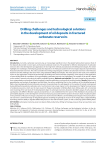
Статья научная
Introduction. Currently, carbonate reservoirs play an increasingly significant role in the global hydrocarbon balance. Most of the deposits discovered in recent years are fractured carbonate reservoirs. The potential for effective development of carbonate reservoirs lies in the development and application of new high-tech methods and advanced well drilling technologies. The article highlights the challenges of developing productive deposits in the Paleozoic basement of Tomsk region deposits represented by fractured carbonate reservoirs. The article considers the mining and geological conditions of carbonate reservoirs in the Paleozoic basement and the challenges that arise when using traditional drilling technologies. The article presents the results of an analytical review on the application of advanced technologies for drilling wells with horizontal completion. Some aspects of the application of nano drilling fluids for conditions of low-permeability carbonate reservoirs are highlighted. The content of the article is based on the author's research and analysis of publicly available literature. Methods and materials. The work is based on the generalization, systematization and analysis of factual material, scientific publications, and results of analytical studies. Results. Based on the generalization and analysis of geological and field data, the authors established that in the conditions of the identified group of fields, when developing fractured carbonate reservoirs, the productivity of a well depends on the number of natural cracks opened during drilling that penetrate carbonate rocks. Fault tectonics had a major impact on the development of highly fractured zones of carbonate reservoirs, which are the main reason for frequent absorption of drilling fluid when drilling wells with a horizontal end. Clustering of the well stock of the development object in carbonate reservoirs allowed to identify 3 groups of wells, opening up deposits with different filtration-capacity characteristics. It was established that the nature of the distribution of porosity and permeability depends on the development of reservoir fracturing associated with the position of tectonic faults. Analytical studies in the perimeter of Russian oil and gas companies have shown that the efficiency of well drilling technologies in fractured carbonate reservoirs is achieved through an integrated approach: detailing the geological structure of the target object, adapted drilling technology with the ability to regulate differential pressure in the well-formation system, as well as selecting optimal drilling fluids.
Бесплатно
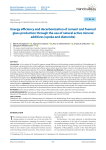
Статья научная
Introduction. In the context of the need to improve energy efficiency and decarbonize cement production, the development of technologies using natural active mineral additives is becoming increasingly relevant. This article examines the use of opoka and diatomite as active additives for producing Portland cement, which allows the clinker content to be reduced by up to 50% while maintaining the operational properties of the cement. Methods and Materials. The research was conducted using electron microscopy, X-ray phase analysis, and energy-dispersive microanalysis. The study analyzed the composition of clinker from SAS-Tobe Technologies, gypsum from the Bagalin deposit, slags from the Novo-Dzhambul Phosphorus Plant, opoka from the Turkestan-Urangay deposit, and diatomite from the Utesai deposit. Physicochemical tests were carried out in the “SAPA” laboratories and at the LLP “SAS-Tobe Technologies” plant. Results and Discussion. The results of the study showed that the addition of opoka and diatomite in a quantity of 15% accelerates mineral formation processes due to the formation of a liquid clinker phase at lower temperatures. This reduces the firing temperature by 100–150 °C, leading to lower energy consumption and improved thermodynamic processes in clinker formation. Conclusion. The introduction of natural mineral additives in Portland cement production reduces clinker content by up to 50%, contributing to energy and resource savings without compromising cement quality. The research results confirm the potential of using opoka and diatomite for decarbonizing the cement industry and increasing its energy efficiency.
Бесплатно
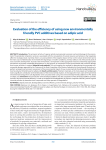
Статья научная
Introduction. The economic activity of a person entails environmental, economic and social damage to the environment. The production of goods or services is associated with the consumption of natural resources and emissions that negatively affect the ecological state. Currently, there is an acute problem of the negative impact of man on the natural environment and is the main source of deterioration in the health of living beings. In modern conditions, chemical safety is one of the priority tasks of socio-economic development. To protect the environment, it is important to take appropriate measures and develop appropriate mechanisms to promote sustainable development. For this purpose, an assessment of the environmental and economic damage from human activities is required. Materials and methods. The work employs the method for determining the prevented environmental damage, approved by the Chairman of the State Committee of the Russian Federation for Environmental Protection, to perform ecological and economic assessment of the environmental impact of new environmentally friendly biodegradable additives for polyvinyl chloride based on adipic acid. Results and discussion. Polymeric materials, as the most popular and widespread, make a significant contribution to the deterioration of the environmental situation. In this regard, the main values of the prevented environmental damage from soil degradation were calculated when using new environmentally friendly additives for PVC based on adipic acid. Conclusion. The introduction of the developed additives into the composition of the developed additives provides economic and environmental efficiency in order to accelerate the biodegradation of polymer composite materials, protects against chemical pollution by hazardous toxic compounds and helps prevent soil degradation.
Бесплатно
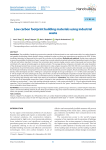
Low carbon footprint building materials using industrial waste
Статья научная
Introduction. The possibility of producing construction materials in Vietnam based on man-made waste with a low carbon footprint and capable of absorbing carbon dioxide is being considered in order to achieve zero greenhouse gas emissions by 2050. To date, insufficient attention has been paid to the search for a solution to this problem. Methods and materials. Studies were conducted to assess the possibility of obtaining a ”green“ cement-free concrete material using local industrial and agricultural waste in the form of fly ash and bottom slag from the Green Star incineration plant, alumina sludge, ceramic waste, lime powder and coconut fiber combined with a special activating agent. an alkaline solution. The average density, compressive strength, and water absorption of the developed cement-free concrete were determined on cube samples measuring 100×100×100 mm in accordance with the requirements of current Vietnamese standards. The ability of the resulting concrete to absorb carbon dioxide was evaluated using the developed method by measuring the mass of carbon dioxide absorbed by concrete samples. Results and discussion. The average density of the developed concrete is 1950 kg/m3; compressive strength at the age of 28 days is 7.5–11.5 MPa; water absorption is 8–10% by weight. The main advantages of using cement-free concrete of the developed composition include reducing the carbon footprint due to the abandonment of the use of Portland cement, the ability of concrete to absorb carbon dioxide and the possibility of recycling high-tonnage man-made waste during its manufacture. Conclusion. The results of the conducted research show that the use of the developed cement-free ”green“ concrete for the manufacture of building products and structures in Vietnam will allow to recycle about 1.1 tons. high-tonnage industrial waste per 1 cubic meter and absorb 10–13 kg of carbon dioxide during operation. This will contribute to the implementation of the planned course for the ”green“ transformation of Vietnam's economy into a sustainable closed-loop economy.
Бесплатно
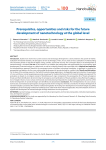
Статья научная
Introduction. Studies have shown that current science and technology development is closely related to the growth of intellectualization of industrial relations, the emergence of new technologies, which, in turn, leads to the actualization of understanding and countering threats in the field of digital, energy, climate, and mental security. The convergent basis in the development of nanotechnology is revealed. The aim of this research is to establish the prerequisites and opportunities for the promising rapid development of nanotechnology on a global scale, as well as to identify potential risks associated with it. Methods and materials. An interdisciplinary approach, based on the convergent nature of modern technology foundation, is significant in studying the prerequisites and patterns for the cross-cutting edge development of nanotechnology on a global scale. Results and discussion. On the basis of the existing research in the field of nanotechnology application in strategically important industries, the postulates of a new worldview concept мировоззренческой концепции for studying the future path of nanotechnologies are proposed. The postulates are based on an integral concept of interlinking such major components: the prerequisites for of threats emergence; threats and their identification; factors forming the emergence and manifestation of threats; problems; risks affecting the aggravation of negative factors. Socio-cultural, technocratic and institutional prerequisites for studying the opportunities and risks of the further development of nanotechnologies are identified and substantiated. Conclusion. The interdependence of socio-cultural, technocratic and institutional prerequisites and opportunities for the emergence of threats and risks for the future development of nanotechnologies is presented. The need for institutional regulation of the long-term development of nanotechnologies is justified, highlighting several emerging institutional challenges that could hinder their industrial application. Recommendations for how to regulate the development of nanotechnologies through institutions are also proposed.
Бесплатно
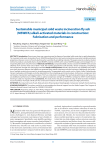
Статья научная
Introduction. Recent years have seen a pressing need to dispose of municipal solid waste due to rapid urbanization. The municipal solid waste incineration fly ash (MSWIFA) produced from solid waste incineration power plant exhibits pozzolanic properties and poses concern of toxicity leaching when used directly as building materials. This paper presents an alkali-activation method to produce sustainable alkali-activated MSWIFA materials (AAFMs) with various MSWIFA dosages and investigate the corresponding fabrication and performance. Materials and Methods. Composited alkali activators activate the MSWIFA with constant alkalinity of 5% and the molar ratio of Si/Na = 0.86. The resulting geopolymers' bulk densities, mineral composites, morphology, and compression strength are thoroughly examined. Results and discussions. Results show that the use of MSWIFA may lead to more loose structures because the bubbles are generated from metallic aluminum and alkali activators. Additionally, the production of multiple crystals also accounts for increasing porosity. The generated multi-crystals such as Sylvite, Halite, Hydrocalumite, Calcium Hydroxide, and Ettringite are further detected from the morphology and mineral analysis. Furthermore, compression tests and toxicity characteristic leaching procedures (TCLP) are conducted to investigate the mechanical performance and heavy metals solidification performance of AAFMs, with an optimal compression strength of 19.99MPa at 28 days for AAFM-10 while toxicity leaching is subject to regularity limits. Conclusions. This study shows that great potential of using the alkali-activation method to recycle hazardous municipal solid fly ash into construction materials with both ecological safety and high performance.
Бесплатно
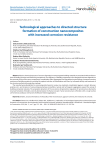
Статья научная
Physico-chemical processes of structure formation in nanocomposite building materials are associated with transformations of binding matrices and reinforcing components. The efficiency of building composites in the designed structures depends on the accurate choice of the source components: nanobinders, fillers (aggregates) and manufacturing technology. Increased corrosion resistance of building materials is provided by optimal selection of nanobinders and fillers, by increased density and treatment of the structure surface with protective coatings. The manufacturing feasibilities for nanocomposites based on various raw materials, nanobinders (gypsum, cement, bitumen, polymer, etc.), and inclusion of various dispersed phases (nanofillers, natural and technogenic aggregates) expand the variety of building composite materials. The synergistic dynamism of the occurrence of geometrical regularity of nanostructures during the structure formation of binders correctly demonstrates the fractal concept. Fractal nanostructures of binders with a rough surface are formed according to mechanism of diffusion-limited aggregation.
Бесплатно
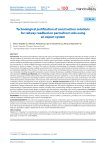
Статья научная
Introduction. The theoretical foundations and practical aspects of implementing technological justification for design concept of railway roadbed on permafrost soils using an expert system are considered. Railway construction in permafrost regions requires specific design solutions and technologies due to complex natural and climatic conditions, geological process dynamics, and the need to coordinate multiple project participants. In such conditions, the development of efficient technological processes, including the construction of railway roadbed, becomes crucial and is achieved through the implementation of an engineering-intelligent subsystem for technical support. The aim of this study is to develop a methodology that integrates intelligent technologies into the processes of designing railway roadbed on permafrost soils to achieve an optimal balance between timelines, cost, resources, and operational reliability of the structure. To this end, an analysis of the technological features of construction in the cryolithozone was conducted, including site-specific localization, resource intensity of processes, variability of design parameters, and year-round work operations. Methods and Materials. The methodology includes the decomposition of the railway roadbed into constructional elements using graph models that formalize the interconnections between subsystems, as well as the development of an expert system based on a production knowledge model for automating the generation of construction work nomenclature. The results of the decomposition and generation of construction work nomenclature form the basis for optimizing the technological process, scheduling, and the development of work production projects. Results and Discussion. Based on the results of the theoretical research, the article explores the possibilities of applying a specially developed experimental software module for the technological justification of design solutions for railway roadbed on permafrost soils. The practical significance of the study is confirmed by the implementation of experimental software modules, including those incorporating intelligent components. This enables a transition from traditional variant-based design to adaptive real-time solutions, minimizing errors and time expenditures. Conclusion. The results of the work demonstrate the potential of intelligent information systems for railway construction in permafrost regions, where process formalization and decision automation play a key role in achieving sustainable development in the industry.
Бесплатно
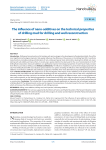
Статья научная
Introduction. Drilling and reconstruction of oil and gas wells are key stages in the development of hydrocarbon fields. One of the most significant technological elements that greatly influences the efficiency of the process is the drilling fluid (DF). It performs many functions, including cooling and lubrication of rock-cutting and special tools, bottomhole cleaning from drilled rock, maintaining well wall stability and many others. In recent years, special attention has been paid to the use of nanomaterials in the DF drilling fluid composition. Nanoscale additives can significantly improve technological properties of water-based muds, increase their efficiency and reduce drilling costs. Methods and Materials. The influence of additives on general technological parameters of Clay-Free Drilling Mud (CFDM) was evaluated. Special attention was paid to revealing the influence of the developed experimental additives on the friction coefficient and antifriction properties of (CFDM), which were determined using modified friction machine AI5018. Results and discussion. This study focuses on the investigation of the impact of nano-additives on the technical properties of water-based mud (WBs) and their effectiveness for drilling and well reconstruction. In the course of the work, comprehensive laboratory studies have been carried out to evaluate the effect of nano-additives of different nature, such as nano-graphite and nano-carbon materials, on the lubricating properties of water-based mud (WBs), which helps to reduce the wear of drilling equipment, increase the mechanical speed of drilling and, as a consequence, reduce the time and financial costs of well construction and re-construction. Conclusion. The introduction of nano-additives allowed significantly in improving the technological properties of drilling fluid DF. The obtained results can be used to improve the compositions of solutions based on the use of nanomaterials, which will increase the efficiency and reliability of well drilling processes.
Бесплатно
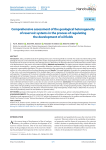
Статья научная
Introduction. Today, a detailed study of the geological structure of oil and gas fields is essential. The study and understanding of the geological structure can be achieved through the analysis of geological heterogeneity. This has a significant impact on the degree of involvement of the reservoir volume in the drainage process, determines the dominant directions of filtration flows and the nature of oil displacement in the process of formation flooding. Methods and materials. The paper presents statistical indicators of the main reservoir characteristics – porosity, permeability, dissection, sandiness, as well as complex indicators of macro- and microheterogeneity in permeability distribution. The given characteristics allow estimating the variability of the reservoir, both by area and by section, i.e. in the volume of the oil-and-gas bearing reservoir. Results. This paper highlights the results of a comprehensive analysis of the micro- and macroheterogeneity of the studied object and a comparison of the identified zones with production data on well operation. The purpose of the study is to develop, using the example of studying the UV1 formation, an algorithm for selecting geological and technological measures, including the use of horizontal well drilling with aphron-containing drilling muds, based on identifying geological and industrial causes of premature water cut in the extracted products, and determining the geological factors that control the distribution of residual hydrocarbon reserves. Determining the causes of premature water cut will help not only to eliminate premature water cut, but also to carry out work to prevent it. Conclusion. The established causes of premature well water cuttings as a result of the analysis will allow to determine promising areas for optimizing the development system – revision of the well grid, drilling of new horizontal production and injection wells, changing operating modes, using flow-diverting technologies, etc. Establishing the directions of fluid movement using heterogeneity analysis helps to determine the sources of water that prematurely enters the well (bottom or injected waters).
Бесплатно

